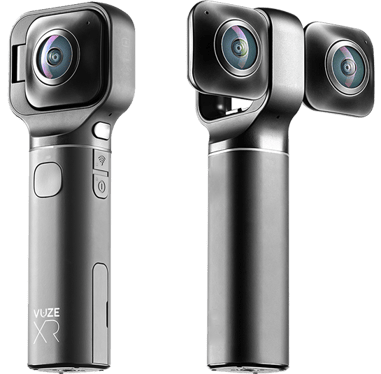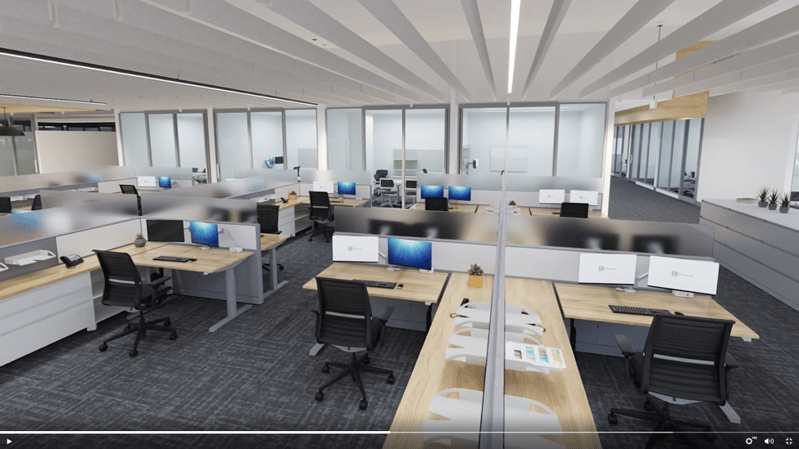Videos have quickly become one of the primary and oftentimes preferred forms of media we consume on a day to day basis. Video sharing and viewing platforms like YouTube have skyrocketed in popularity, with more than 2 billion users and audiences consuming more than a billion hours of video on YouTube every day - to say that we enjoy using this medium would be a massive understatement. However, perhaps you have come in contact when browsing YouTube 360-degree video experiences where you’re seated on a rollercoaster ride or exploring the depths of the deep blue ocean. So many of these 360 videos are stunning, and coupled with VR headsets or VR glasses like the Homido Mini’s, these videos can even transport us into the exact environments.
While 360 videos have widely been used for entertainment purposes, businesses can take advantage of various shapes and forms as well as the core benefits this immersive media has to offer. In today’s post, we’ll be sharing how to create 360 videos, specially with a 360 camera, producing 3D animations, and filming 360 green screen videos - let’s dive in.
%20(1).jpeg?width=801&name=BUSINESS%20READY%20VR%2084%20(3)%20(1).jpeg)
When to Capture in 360
Before you can get started with creating 360 videos, you need to know which stories are best shared in this immersive format.
2D videos are still a perfectly useful form of media, helping you communicate clearly with your clients and tell your story in an eye-catching manner. However, how presenting with 360-degree videos differs is how it is able to open a window into a new view and perspective that cannot be achieved outside of this medium. Here are a few scenarios where 360 videos would shine brightest:
Creating a Wow Moment
If you really want to give your audience a “wow” experience, immersive technology is the way to go. 2D images and videos are the standard in every industry where people are not just used to the form of media but it’s also one to be expected. While 360 videos is certainly not new technology, most people have yet to have their own first hand encounter with an immersive experience. If you’re looking to impress your audience and give viewers an exciting experience, 360 video can do just that.
Establish a Deeper Understanding
Perhaps one of the biggest challenges you face in your field is communicating with your clients, or the comment “I’m just not seeing it” is one you’re all too familiar with. In industries like architecture and design, oftentimes tools like floor plans and even 2D renderings can cause confusion or a lack of understanding an overall vision. Or even in real estate, sometimes the still-shot photos cannot give your clients an accurate understanding of size and scale. 360 videos can be used like short snippets where your clients are able to get a better idea of your plans. And hopefully, with a better understanding of a space, your clients can supply more informed feedback, helping you make the necessary changes to fulfil what they were looking for.
What Makes the Location Worth Exploring?
This is definitely one question worth answering since it forces you to think about the “why” and how capturing a space in this format will be helpful in drawing in viewers and even more importantly warm prospects to learn more. Whether it be highlighting your products in your physical showroom or giving a mini virtual tour of an apartment space, asking this question helps you narrow in on what the key features you would like to focus on and building your 360 video on a strong concept as your foundation.
Top Tip: Keep it simple. Sometimes videos that are too long and too elaborate can end up distracting the viewer, losing their valuable attention. Especially when using 360 videos for business, keep the length to about 1-2 minutes for a short yet effective video.
Once you’ve determined which space you would like to capture in 360 video, it’s time to begin shooting.

The Vuze VR 360 camera.
360 Camera
Using a 360 camera is the simplest, quickest and most affordable way to create content. Much of the cameras on the market only require the user to click a single button to begin recording a scene. We have recently compiled our top 360 camera picks for 2021, where you will find many solutions that support capturing 360 photos as well as 360 videos all in one device. Even cameras like the Vuze VR feature an extra capability that lets you take 180-degree stereoscopic images. Plus, thanks to tech experts constantly inventing and innovating new solutions, you can find a 360 camera that will match any budget range.
Here are a few tips we recommend when taking your 360 videos:
- Use a monopod or tripod and make sure the camera is still and level before shooting
- Set the camera lens at the same height you plan on using for your cubemap renderings (we recommend approximately 5’6″ as a good compromise for the average North American male/female height)
- Remember to take things slow. Even the smallest of movements will be very noticeable when you watch it playing back

3D Animation
While 3D animation might not necessarily be filtered under the category “360 video”, these video clips are fantastic at showcasing configurations in an engaging way. Perhaps you have seen advertisements where a phone is assembled in seconds right before your eyes, showcasing the different parts and features that make the phone better than other solutions. Most likely, the choreographed video featured 3D animations. These elaborate flythroughs are fantastic at showing the variety of a certain configuration, functionality of a product, or the perfect change to highlight the key features of a solution.
In this era of the digital transformation, we all have seen and been exposed to 3D animations namely in the advertisements we come across on a daily basis. However, creating these clips can be incredibly time consuming as each millisecond must be designed and added to the choreographed sequence for a smooth and impactful video. While you certainly can take a stab at creating your own 3D animations, learning how to do it as well as actually executing the project to the quality of what you are accustomed to may be easier said than done.
Our tip is to find a trusted visualizations team who can curate your very own 3D animation to highlight your products and environments, like our partners in the Visualization team at KiSP. They’re experts in creating rich immersive experiences with a keen commitment in supporting you to tell your best visual story possible. By partnering with a team, you not free up time to continue working on projects, but you also consult those most familiar and comfortable with creating these experiences.

Gabe, the Managing Partner at KiSP, introducing a virtual showroom with a green screen 360 video.
Green Screen 360 Video
And finally, you can also create 360 videos along with a green screen to change up your environment or completely blend your video into a given environment. Here are a few steps to get started:
- Find or invest in a good quality green screen environment as well as lighting and audio equipment
- Optional: teleprompters are helpful if your 360 video includes a script and speakers - makes the video sound much more clean and professional
- When videotaping a speaker or multiple speakers, make sure to shoot both from the waist up and a full body shot. This gives you more option and material to see what works best
- Take multiple takes to ensure you have a library of choice to select from
- Check that the output is in any of the used format and most importantly in HD
Green screen 360 videos are best used when they are combined with another 360 video or a VR experience. It gives more layers to your experiences as well as extra flexibility to add more elements to your projects. Our team has used this type of immersive video to introduce a project to viewers exploring our VR project. This is a great feature, especially as trade show season is fast approaching, for designers or galleries to welcome their virtual guests into their experience.
We hope that this overview as well as our tips have been helpful in getting you started on creating 360 videos. For information and assistance on creating 360 videos, get in touch with our team - we would be happy to connect with you. Looking for a team that can help you create immersive 360 videos? Reach out to our Visualization partners at KiSP to get started today.



.jpg?width=245&height=150&name=shutterstock_110829887%20(1).jpg)
